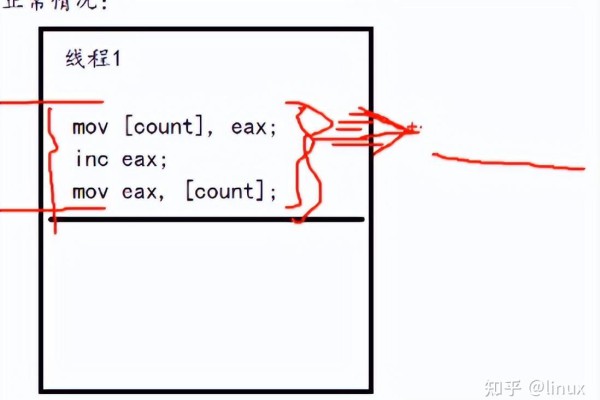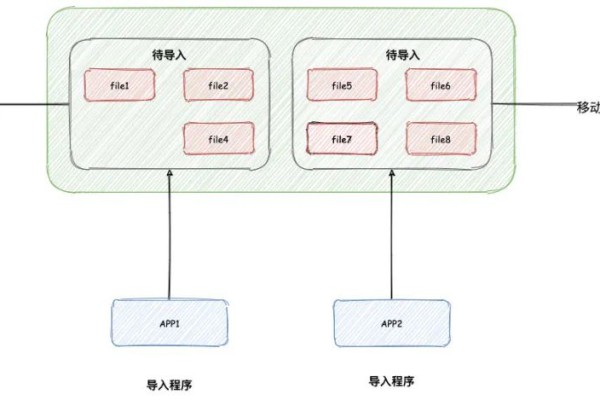
来自:冰河技术
前言
在Java的高并发领域,线程池一直是一个绕不开的话题。有些童鞋一直在使用线程池,但是,对于如何创建线程池仅仅停留在使用Executors工具类的方式,那么,创建线程池究竟存在哪几种方式呢?就让我们一起从创建线程池的源码来深入分析究竟有哪些方式可以创建线程池。
使用Executors工具类创建线程池
在创建线程池时,初学者用的最多的就是Executors 这个工具类,而使用这个工具类创建线程池时非常简单的,不需要关注太多的线程池细节,只需要传入必要的参数即可。Executors 工具类提供了几种创建线程池的方法,如下所示。
其中,Executors.newWorkStealingPool方法是Java 8中新增的创建线程池的方法,它能够为线程池设置并行级别,具有更高的并发度和性能。除了此方法外,其他创建线程池的方法本质上调用的是ThreadPoolExecutor类的构造方法。
例如,我们可以使用如下代码创建线程池。
Executors.newWorkStealingPool();
Executors.newCachedThreadPool();
Executors.newScheduledThreadPool(3);
使用ThreadPoolExecutor类创建线程池
从代码结构上看ThreadPoolExecutor类继承自AbstractExecutorService,也就是说,ThreadPoolExecutor类具有AbstractExecutorService类的全部功能。
既然Executors工具类中创建线程池大部分调用的都是ThreadPoolExecutor类的构造方法,所以,我们也可以直接调用ThreadPoolExecutor类的构造方法来创建线程池,而不再使用Executors工具类。接下来,我们一起看下ThreadPoolExecutor类的构造方法。
ThreadPoolExecutor类中的所有构造方法如下所示。
public ThreadPoolExecutor(int corePoolSize,
int maximumPoolSize,
long keepAliveTime,
TimeUnit unit,
BlockingQueue workQueue) {
this(corePoolSize, maximumPoolSize, keepAliveTime, unit, workQueue,
Executors.defaultThreadFactory(), defaultHandler);
}
public ThreadPoolExecutor(int corePoolSize,
int maximumPoolSize,
long keepAliveTime,
TimeUnit unit,
BlockingQueue workQueue,
ThreadFactory threadFactory) {
this(corePoolSize, maximumPoolSize, keepAliveTime, unit, workQueue,
threadFactory, defaultHandler);
}
public ThreadPoolExecutor(int corePoolSize,
int maximumPoolSize,
long keepAliveTime,
TimeUnit unit,
BlockingQueue workQueue,
RejectedExecutionHandler handler) {
this(corePoolSize, maximumPoolSize, keepAliveTime, unit, workQueue,
Executors.defaultThreadFactory(), handler);
}
public ThreadPoolExecutor(int corePoolSize,
int maximumPoolSize,
long keepAliveTime,
TimeUnit unit,
BlockingQueue workQueue,
ThreadFactory threadFactory,
RejectedExecutionHandler handler) {
if (corePoolSize < 0 ||
maximumPoolSize <= 0 ||
maximumPoolSize < corePoolSize ||
keepAliveTime < 0)
throw new IllegalArgumentException();
if (workQueue == null || threadFactory == null || handler == null)
throw new NullPointerException();
this.acc = System.getSecurityManager() == null ?
null :
AccessController.getContext();
this.corePoolSize = corePoolSize;
this.maximumPoolSize = maximumPoolSize;
this.workQueue = workQueue;
this.keepAliveTime = unit.toNanos(keepAliveTime);
this.threadFactory = threadFactory;
this.handler = handler;
}
由ThreadPoolExecutor类的构造方法的源代码可知,创建线程池最终调用的构造方法如下。
public ThreadPoolExecutor(int corePoolSize, int maximumPoolSize,
long keepAliveTime, TimeUnit unit,
BlockingQueue workQueue,
ThreadFactory threadFactory,
RejectedExecutionHandler handler) {
if (corePoolSize < 0 ||
maximumPoolSize <= 0 ||
maximumPoolSize < corePoolSize ||
keepAliveTime < 0)
throw new IllegalArgumentException();
if (workQueue == null || threadFactory == null || handler == null)
throw new NullPointerException();
this.acc = System.getSecurityManager() == null ?
null :
AccessController.getContext();
this.corePoolSize = corePoolSize;
this.maximumPoolSize = maximumPoolSize;
this.workQueue = workQueue;
this.keepAliveTime = unit.toNanos(keepAliveTime);
this.threadFactory = threadFactory;
this.handler = handler;
}
关于此构造方法中各参数的含义和作用,各位可以移步《》进行查阅。
大家可以自行调用ThreadPoolExecutor类的构造方法来创建线程池。例如,我们可以使用如下形式创建线程池。
new ThreadPoolExecutor(0, Integer.MAX_VALUE,
60L, TimeUnit.SECONDS,
new SynchronousQueue());
使用ForkJoinPool类创建线程池
在Java8的Executors工具类中,新增了如下创建线程池的方式。
public static ExecutorService newWorkStealingPool(int parallelism) {
return new ForkJoinPool
(parallelism,
ForkJoinPool.defaultForkJoinWorkerThreadFactory,
null, true);
}
public static ExecutorService newWorkStealingPool() {
return new ForkJoinPool
(Runtime.getRuntime().availableProcessors(),
ForkJoinPool.defaultForkJoinWorkerThreadFactory,
null, true);
}
从源代码可以可以,本质上调用的是ForkJoinPool类的构造方法类创建线程池,而从代码结构上来看ForkJoinPool类继承自AbstractExecutorService抽象类。接下来,我们看下ForkJoinPool类的构造方法。
public ForkJoinPool() {
this(Math.min(MAX_CAP, Runtime.getRuntime().availableProcessors()),
defaultForkJoinWorkerThreadFactory, null, false);
}
public ForkJoinPool(int parallelism) {
this(parallelism, defaultForkJoinWorkerThreadFactory, null, false);
}
public ForkJoinPool(int parallelism,
ForkJoinWorkerThreadFactory factory,
UncaughtExceptionHandler handler,
boolean asyncMode) {
this(checkParallelism(parallelism),
checkFactory(factory),
handler,
asyncMode ? FIFO_QUEUE : LIFO_QUEUE,
"ForkJoinPool-" + nextPoolId() + "-worker-");
checkPermission();
}
private ForkJoinPool(int parallelism,
ForkJoinWorkerThreadFactory factory,
UncaughtExceptionHandler handler,
int mode,
String workerNamePrefix) {
this.workerNamePrefix = workerNamePrefix;
this.factory = factory;
this.ueh = handler;
this.config = (parallelism & SMASK) | mode;
long np = (long)(-parallelism); // offset ctl counts
this.ctl = ((np << AC_SHIFT) & AC_MASK) | ((np << TC_SHIFT) & TC_MASK);
}
通过查看源代码得知,ForkJoinPool的构造方法,最终调用的是如下私有构造方法。
private ForkJoinPool(int parallelism,
ForkJoinWorkerThreadFactory factory,
UncaughtExceptionHandler handler,
int mode,
String workerNamePrefix) {
this.workerNamePrefix = workerNamePrefix;
this.factory = factory;
this.ueh = handler;
this.config = (parallelism & SMASK) | mode;
long np = (long)(-parallelism); // offset ctl counts
this.ctl = ((np << AC_SHIFT) & AC_MASK) | ((np << TC_SHIFT) & TC_MASK);
}
其中,各参数的含义如下所示。
当然,私有构造方法虽然是参数最多的一个方法,但是其不会直接对外方法,我们可以使用如下方式创建线程池。
new ForkJoinPool();
new ForkJoinPool(Runtime.getRuntime().availableProcessors());
new ForkJoinPool(Runtime.getRuntime().availableProcessors(),
ForkJoinPool.defaultForkJoinWorkerThreadFactory,
null, true);
使用ScheduledThreadPoolExecutor类创建线程池
在Executors工具类中存在如下方法类创建线程池。
public static ScheduledExecutorService newSingleThreadScheduledExecutor() {
return new DelegatedScheduledExecutorService
(new ScheduledThreadPoolExecutor(1));
}
public static ScheduledExecutorService newSingleThreadScheduledExecutor(ThreadFactory threadFactory) {
return new DelegatedScheduledExecutorService
(new ScheduledThreadPoolExecutor(1, threadFactory));
}
public static ScheduledExecutorService newScheduledThreadPool(int corePoolSize) {
return new ScheduledThreadPoolExecutor(corePoolSize);
}
public static ScheduledExecutorService newScheduledThreadPool(
int corePoolSize, ThreadFactory threadFactory) {
return new ScheduledThreadPoolExecutor(corePoolSize, threadFactory);
}
从源码来看线程池的创建方式有几种,这几个方法本质上调用的都是ScheduledThreadPoolExecutor类的构造方法,ScheduledThreadPoolExecutor中存在的构造方法如下所示。
public ScheduledThreadPoolExecutor(int corePoolSize) {
super(corePoolSize, Integer.MAX_VALUE, 0, NANOSECONDS,
new DelayedWorkQueue());
}
public ScheduledThreadPoolExecutor(int corePoolSize, ThreadFactory threadFactory) {
super(corePoolSize, Integer.MAX_VALUE, 0, NANOSECONDS,
new DelayedWorkQueue(), threadFactory);
}
public ScheduledThreadPoolExecutor(int corePoolSize, RejectedExecutionHandler handler) {
super(corePoolSize, Integer.MAX_VALUE, 0, NANOSECONDS,
new DelayedWorkQueue(), handler);
}
public ScheduledThreadPoolExecutor(int corePoolSize,ThreadFactory threadFactory, RejectedExecutionHandler handler) {
super(corePoolSize, Integer.MAX_VALUE, 0, NANOSECONDS,
new DelayedWorkQueue(), threadFactory, handler);
}
而从代码结构上看,ScheduledThreadPoolExecutor类继承自ThreadPoolExecutor类,本质上还是调用ThreadPoolExecutor类的构造方法线程池的创建方式有几种,只不过此时传递的队列为DelayedWorkQueue。我们可以直接调用ScheduledThreadPoolExecutor类的构造方法来创建线程池,例如以如下形式创建线程池。
new ScheduledThreadPoolExecutor(3)
最后,需要注意的是:ScheduledThreadPoolExecutor主要用来创建执行定时任务的线程池。
后记:
记住:你比别人强的地方,不是你做过多少年的CRUD工作,而是你比别人掌握了更多深入的技能。不要总停留在CRUD的表面工作,理解并掌握底层原理并熟悉源码实现,并形成自己的抽象思维能力,做到灵活运用,才是你突破瓶颈,脱颖而出的重要方向!
最后,作为一名合格(发际线比较高)的开发人员或者资深(秃顶)的工程师和架构师来说,理解原理和掌握源码,并形成自己的抽象思维能力,灵活运用是你必须掌握的技能。
特别推荐一个分享架构+算法的优质内容,还没关注的小伙伴,可以长按关注一下:
长按订阅更多精彩▼
如有收获,点个在看,诚挚感谢
限时特惠:本站每日持续更新海量展厅资源,一年会员只需29.9元,全站资源免费下载
站长微信:zhanting688声明:本站所有文章,如无特殊说明或标注,均为本站原创发布。任何个人或组织,在未征得本站同意时,禁止复制、盗用、采集、发布本站内容到任何网站、书籍等各类媒体平台。如若本站内容侵犯了原著者的合法权益,可联系我们进行处理。




